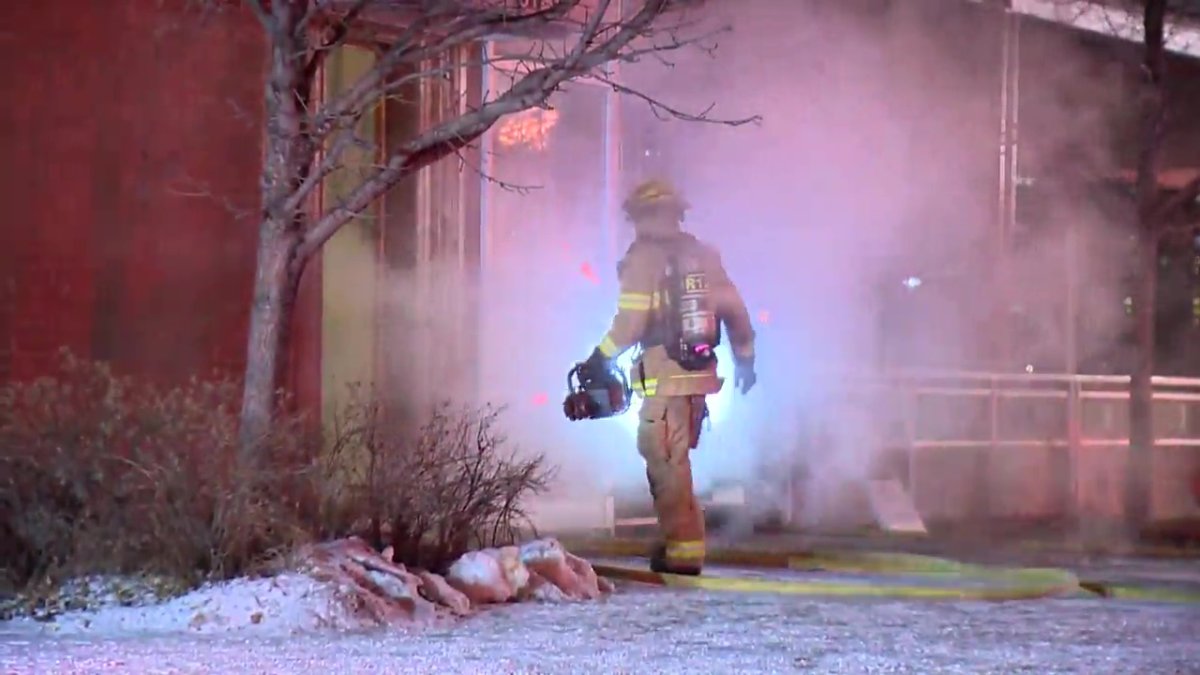Cancer has become the number one killer of firefighters in North America, according to the London Professional Fire Fighters Association (LPFFA).

Chris Bruinink, a member of the London Fire Department, said it’s something that every aspiring firefighter is aware of, but “you never really think it’s going to happen to you.”
Bruinink, who’s been with the local fire department for 22 years, was diagnosed with Stage 4 colon cancer in December 2020. Having no family history of the disease, he remains certain the cancer was attributed to his job.
“There’s so many exposures through our job,” he said, “I’m in my third relapse now, third round of chemo, trying to eliminate it. It’s been quite a battle.”

He added that it’s hard to pinpoint which blaze could have resulted in his diagnosis. But, as Bruinink explained, there was one incident and timeline that matches up.
“It was an apple orchard fire,” he said. “I was there the day after the fire, which is actually more dangerous, in some ways, because things aren’t burning anymore and there were pesticides and herbicides that were stored in a shed there and I ended up in the runoff, inadvertently cleaning up hoses in that exposure.
“It’s potentially that incident but it’s probably more a cumulative effect of exposure to burn toxins,” Bruinink continued. “With synthetic material, now in construction and in our homes, the toxicity of smoke is outrageously higher than it was in the past.”
The LPFFA said firefighters are at a nine per cent greater risk of being diagnosed with a form of cancer and a 14 per cent greater risk of dying from the disease compared to the general population. In total, there are 17 cancers that have been identified as having a greater likelihood of occurring within a firefighter than compared to other occupations.
This is partially due to certain manufactured chemicals, specifically polyfluoroalkyl substances (PFAS), which, when ignited, produce cancer-causing agents that can put firefighters at risk if the proper precautions are not taken.

Get daily National news
“I think it’s important for people to be aware of the dangers we face,” Bruinink said. “Everyone pictures us running into burning buildings, we see the acute danger, it’s not hard to see that. It’s the chronic exposure to toxicity and the cumulative effect over years and years of being exposed to these toxins that take a toll.”
In honouring January Firefighter Cancer Awareness Month, the LPFFA remains dedicated to bringing awareness to the occupational hazard firefighters face on a daily basis and has launched a wristband campaign supporting London firefighters that are battling cancer as a result of their job.
The wristbands, which are labelled “LPFFA Strong,” will be distributed to all 450 firefighters within the London Fire Department. A limited number of wristbands will also be available to the public during January.
“From my perspective, it’s creating that awareness,” said Gary Bridge, assistant deputy fire chief with the London Fire Department. “Our first responders put their lives on the line for their work and I think these bands represent just a reminder of the precautions they should take.”
Bridge explained that most of the safety precautions that are in place today were not always around.
“Even returning to the station, years ago, it was seen as a bit of a badge of honor to have dirty gear or dirty helmet as a firefighter and that’s now changed,” he said.
All firefighters are now required to have two sets of gear at all times, each being frequently inspected as well as sanitized.
Bruinink noted the addition of self-contained breathing apparatuses to aid in inhalation protection. However, he says that their cancer statistics continue to rise at an “alarming rate.”
“Our belief is it’s absorption and avoiding that it’s impossible,” he said. “We’re basically a giant sponge.”
Bridge referenced the same analogy.
“When they’re on scene at a fire there’s a chance that they could inhale it through their nose, they could absorb it through their skin, or potentially even ingest it if it was on their hands. So, when we talk about bunker gear, it’s just one way to prevent the absorption through the skin,” he explained.
“It’s important to get that gear washed up and cleaned so they’re ready to go the next time so that we can prevent that sponge from the possibility of absorbing any of these cancer-causing agents into the body.”
Bridge said the London department is doing “everything they can” to maximize the safety of firefighters, hoping the community will also support and listen to their calls surrounding fire prevention.
“The more we can prevent these fires from occurring, if we can reduce our firefighters going into these buildings and into toxic smoke, we can reduce that (exposure) risk,” he said.

As for Bruinink, his cancer diagnosis is considered life-threatening.
“The way it’s been worded to me and they’re trying to keep it as optimistic as possible, but they’re trying to help me outlive a cure,” he said. “The chemo I’m getting will not eliminate (the cancer), it will only control it.”
He said that last July, he had a large procedure in Bethesda, Maryland, and he’s being sent back down there again hopefully this summer.
“It does have the potential to eliminate it completely, but that’s very unlikely,” he shared with emotion. “It’s more likely that it will reset the clock, allow me to live longer to hopefully have something develop in the future that may cure it. But at this point, it’s considered terminal.”
As Bruinink continues to battle his life-altering diagnosis, he takes comfort in the steps he’s helped local fire departments take in strengthening the safety of his occupation. And, he said, the support from his fellow firefighters and the community is something that he will always hold on to.
“That’s why I want to be a part of (Firefighter Cancer Awareness Month) because I think it’s important for people to be aware of the dangers we face.”












Comments